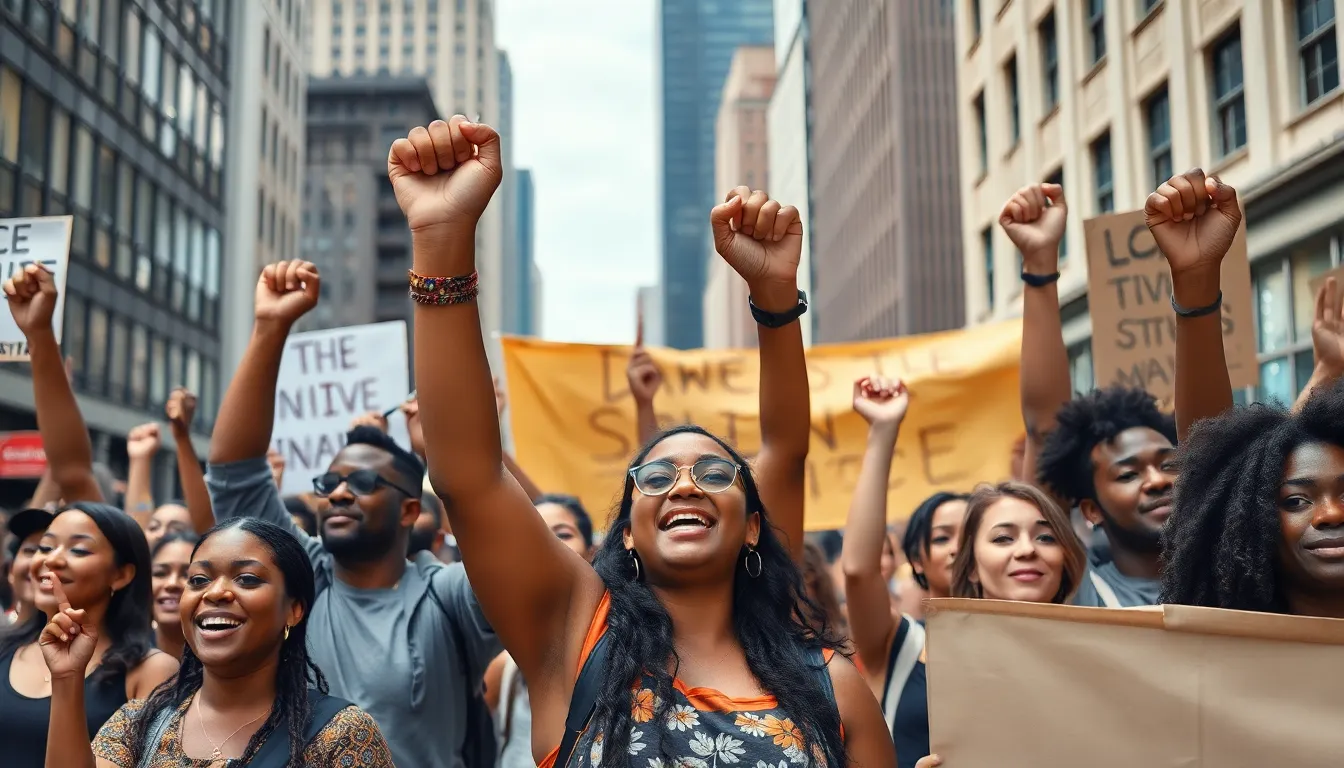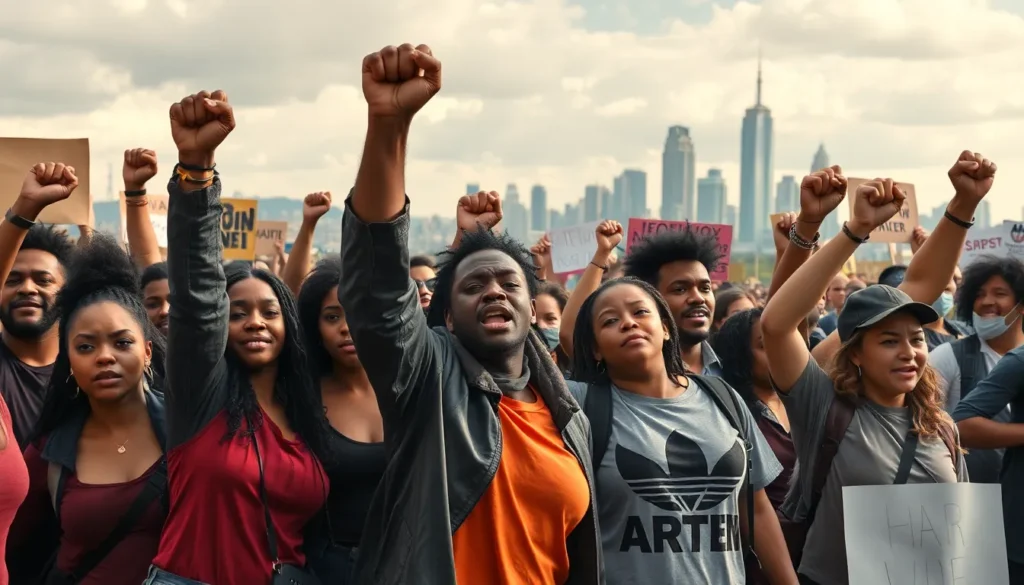Table of Contents
ToggleRiot events have shaped societies throughout history, often reflecting deep-seated social tensions and grievances. These volatile gatherings can erupt suddenly, fueled by political unrest, economic disparity, or cultural clashes. Understanding the dynamics behind these events is crucial for grasping the complexities of human behavior and societal change.
From peaceful protests that escalate into chaos to spontaneous uprisings sparked by injustice, riot events reveal the raw emotions that drive communities to the brink. They serve as a powerful reminder of the struggles people face and the urgent need for dialogue and reform. By examining these incidents, one can uncover the underlying issues that ignite such fervor and the potential pathways toward resolution.
Overview of Riot Events
Riot events reflect significant social unrest, often emerging from accumulated frustrations within communities. They connect deeply to issues such as political instability, financial disparities, and cultural tensions. These gatherings typically manifest when peaceful protests escalate, transforming collective grievances into chaotic confrontations.
Riot events can occur in various contexts, including:
- Political Contexts: Government actions, such as restrictive policies or perceived injustices, can trigger public outcry. Examples include protests against police violence or governmental corruption.
- Economic Conditions: Widespread unemployment or economic decline exacerbates public dissatisfaction. Historical instances, like the 1992 Los Angeles riots, showcase the link between economic hardship and community unrest.
- Cultural Conflicts: Social tensions may arise from issues of identity, race, or ethnicity. Events such as the Stonewall riots illustrate how cultural conflicts can lead to significant societal shifts.
Understanding the emotional drivers behind these occurrences remains crucial for addressing underlying grievances. Awareness of these factors aids in fostering meaningful dialogue and encourages effective reforms to mitigate recurring tensions.
Historical Significance of Riot Events

Riot events reveal deep-rooted social conflicts and highlight community tensions. Understanding these occurrences enhances awareness of the factors driving social change.
Social and Political Context
Social and political environments play crucial roles in riot events. Economic inequality often triggers frustration among marginalized groups. Political decisions, such as unjust laws or oppressive governance, frequently incite unrest. Cultural identity plays a vital role as well, as clashes between different communities can amplify tensions. These elements combined create a landscape where discontent can quickly escalate into riots, illustrating the need for addressing grievances through dialogue and reform.
Notable Riot Events in History
Numerous riots throughout history showcase the significance of societal grievances.
| Year | Event | Context |
|---|---|---|
| 1965 | Watts Riots | Response to police brutality in Los Angeles |
| 1969 | Stonewall Riots | Sparked by a raid on a gay bar in New York |
| 1992 | Los Angeles Riots | Triggered by the acquittal of police officers in the Rodney King case |
| 2011 | London Riots | Sparked by public anger over police conduct and social issues |
| 2020 | George Floyd Protests | A response to systemic racism and police violence |
Each of these events not only reflects the immediate causes of the unrest but also underscores the ongoing struggles for justice and equality within societies. Analyzing these historical instances helps in understanding contemporary social movements and their underlying motivations.
Causes of Riot Events
Riot events often stem from a combination of factors that create a perfect storm for unrest. Understanding these causes provides insight into the complex dynamics behind social upheaval.
Economic Factors
Economic disparities frequently ignite tensions leading to riots. High unemployment rates, limited access to education, and overwhelming poverty create frustration among marginalized populations. For instance, the 2011 London Riots highlighted how economic discontent intertwined with youth disenfranchisement. These economic inequalities foster a sense of hopelessness, leading to collective actions that challenge the status quo.
Social Injustice
Social injustice plays a significant role in the emergence of riots. Systemic discrimination and unequal treatment contribute to feelings of alienation within specific communities. The Stonewall Riots of 1969 exemplify this, as LGBTQ+ individuals protested against ongoing harassment and discrimination. Injustices evoke emotional responses, driving affected groups to unite in demands for recognition, rights, and reform, often manifested through riot events.
Political Oppression
Political oppression serves as a catalyst for riots as well. Governments that impose unjust laws or restrict freedoms ignite discontent among the populace. The George Floyd protests in 2020 showcased widespread frustration over police brutality and systemic racism in the U.S. When citizens perceive their voices silenced and rights stripped away, they often resort to riots as a means of expressing anger and demanding accountability from those in power.
Impact of Riot Events
Riot events create significant repercussions across various domains, influencing communities, media narratives, and public perception. Understanding these impacts provides insight into the broader implications of social unrest.
Community Effects
Riot events generate profound effects on communities, often resulting in immediate and long-lasting consequences. Communities may face economic decline due to property destruction and business disruptions. Recovery from such events can take years, with local businesses, especially small ones, often bearing the brunt of the aftermath.
Social cohesion frequently suffers as well. Trust within communities can diminish, leading to increased tensions between residents and law enforcement. Families and friends may experience emotional trauma, compounding existing grievances. Community organizations often engage in rebuilding efforts, aiming to restore a sense of unity, yet challenges persist long after the event has concluded.
Media Coverage and Public Perception
Media coverage plays a pivotal role in shaping public perception of riot events. Sensationalized reporting can skew narratives, often emphasizing violence over the underlying causes of unrest. This approach influences how the public interprets the events, sometimes fostering division rather than understanding.
Public perception can shift dramatically depending on media portrayal. Emphasizing peaceful protests and community voices leads to a more nuanced understanding, while focusing solely on chaos may perpetuate stereotypes and fear. Social media also amplifies these narratives, allowing diverse perspectives but also contributing to misinformation.
Consequently, the public’s response to future incidents can vary based on the framing of past events. Those affected by riot events often seek media representation that highlights their experiences and advocates for change, pushing against narratives that overshadow their struggles.
Riot events serve as powerful indicators of societal discontent and highlight the urgent need for change. They emerge from a complex interplay of economic, social, and political factors that often leave marginalized communities feeling unheard and oppressed. Understanding the roots of these uprisings is essential for fostering constructive dialogue and promoting meaningful reform.
The lasting impacts of riots resonate far beyond the immediate chaos. Communities grapple with economic decline and emotional scars long after the events. By examining the historical context and the underlying grievances, society can work toward preventing future unrest and cultivating environments where voices are acknowledged and valued. Addressing these issues is crucial for building a more equitable and just world.





